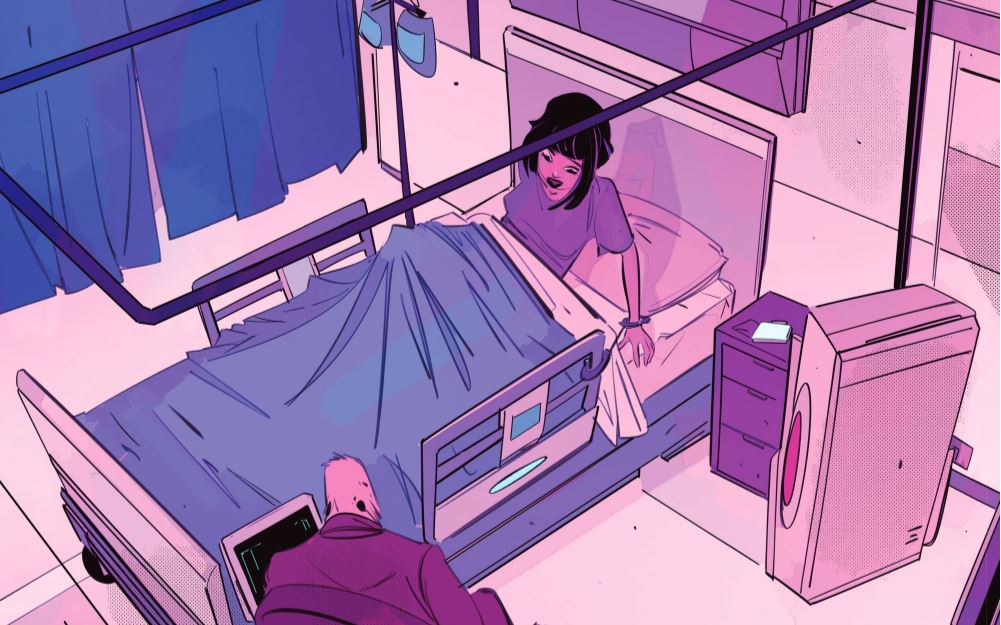Table of Contents Show
The new release FAB, from StoryWorlds Media, is a comic book take on the ethics of cloning, 3D printing, and tech companies. FAB, aptly subtitled “Pandora,” thrusts readers into a near-future alongside protagonist Marcia Clay as she investigates a secret cabal of tech companies called Ouroboros, who have massive control over the general public through their products. Readers watch as the most dangerous technology — a fab machine that can create clones — is unleashed onto the public by villainous Troy Tech. FAB takes readers into a technologically unhinged world where the topics of cloning, 3D printing, and gene-editing open a metaphorical Pandora’s box of ethical and moral questions.
The Story (So Far)
FAB is written by Ramzee, drawn and colored by Stefano Simeone, and lettered by Taylor Esposito. Ramzee said in an interview featured in the back of the comic book that he wanted to make this project “the comic equivalent of an epic, high-stakes summer blockbuster,” which is certainly achieved through the boldly colored art and intense plot. The story hits the ground running by introducing us to protagonist Marcia Clay waking up in the hospital after she dies working her security job at a research lab.
An eagle-headed humanoid from “The Company” greets her when she wakes in her hospital bed and explains that the creature she died fighting is a “fab,” the product of a 3D printer that can replicate any animate or inanimate thing. From there, Marcia is recruited as a contract agent for The Company to track down Troy Tech. Marcia goes undercover at Troy Tech and is recruited to join Ouroboros, where she meets villainous, mysterious Ezekiel Troy. When Marcia meets a fab of herself that the web of Troy Tech’s deceptions and manipulations become even more apparent.
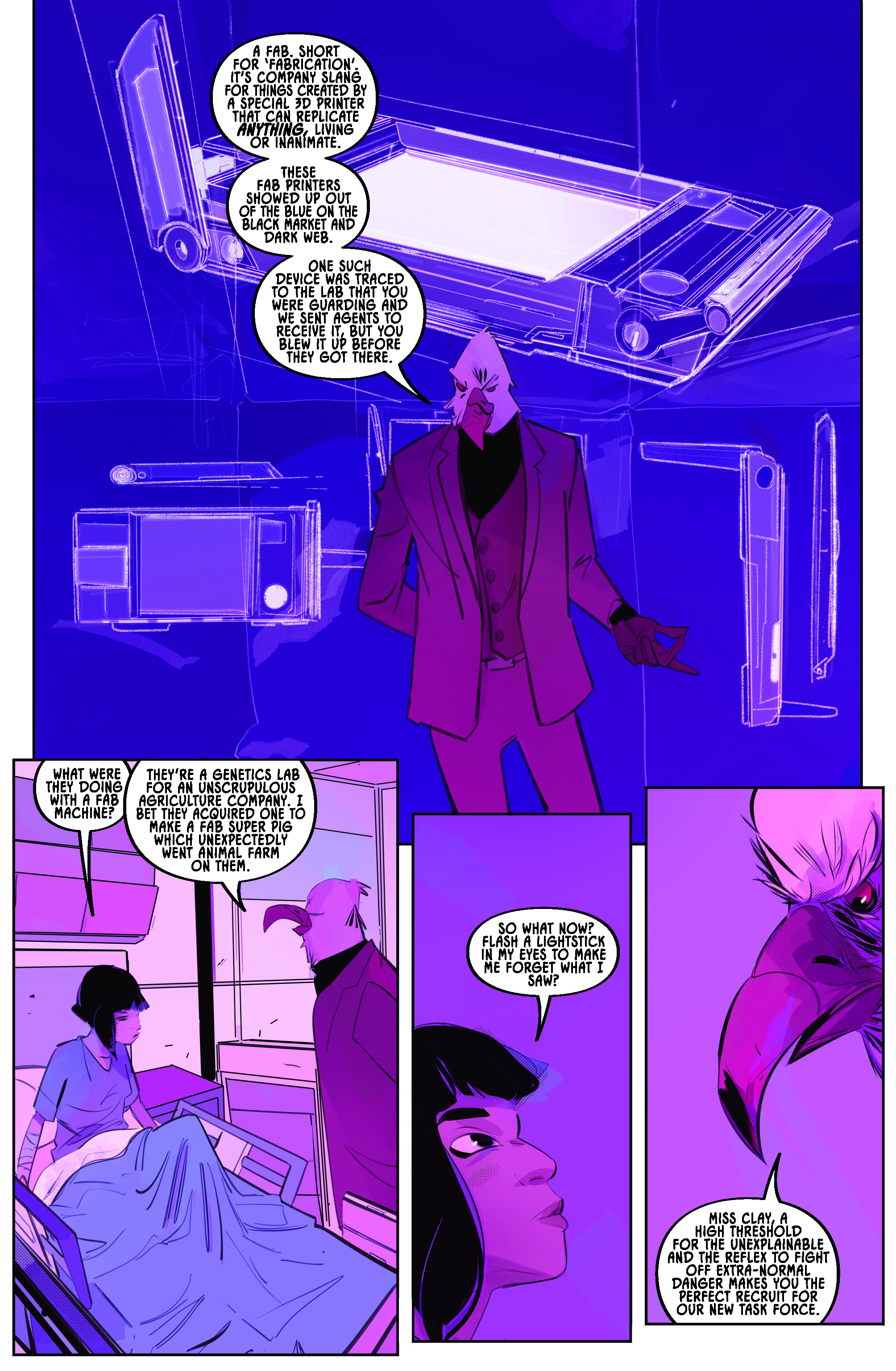
FAB: Pandora. StoryWorlds Media. 2021. 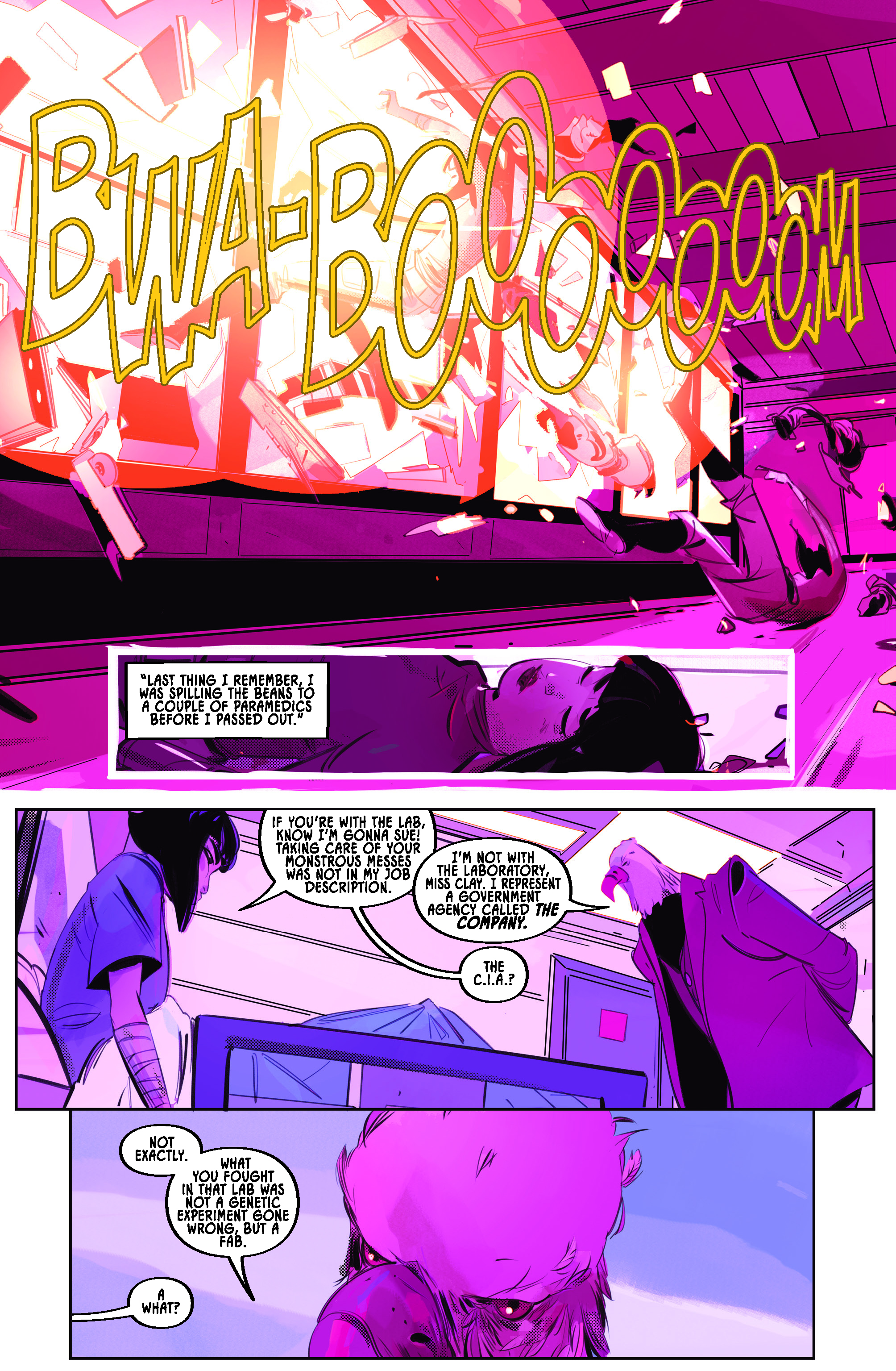
FAB: Pandora. StoryWorlds Media. 2021. 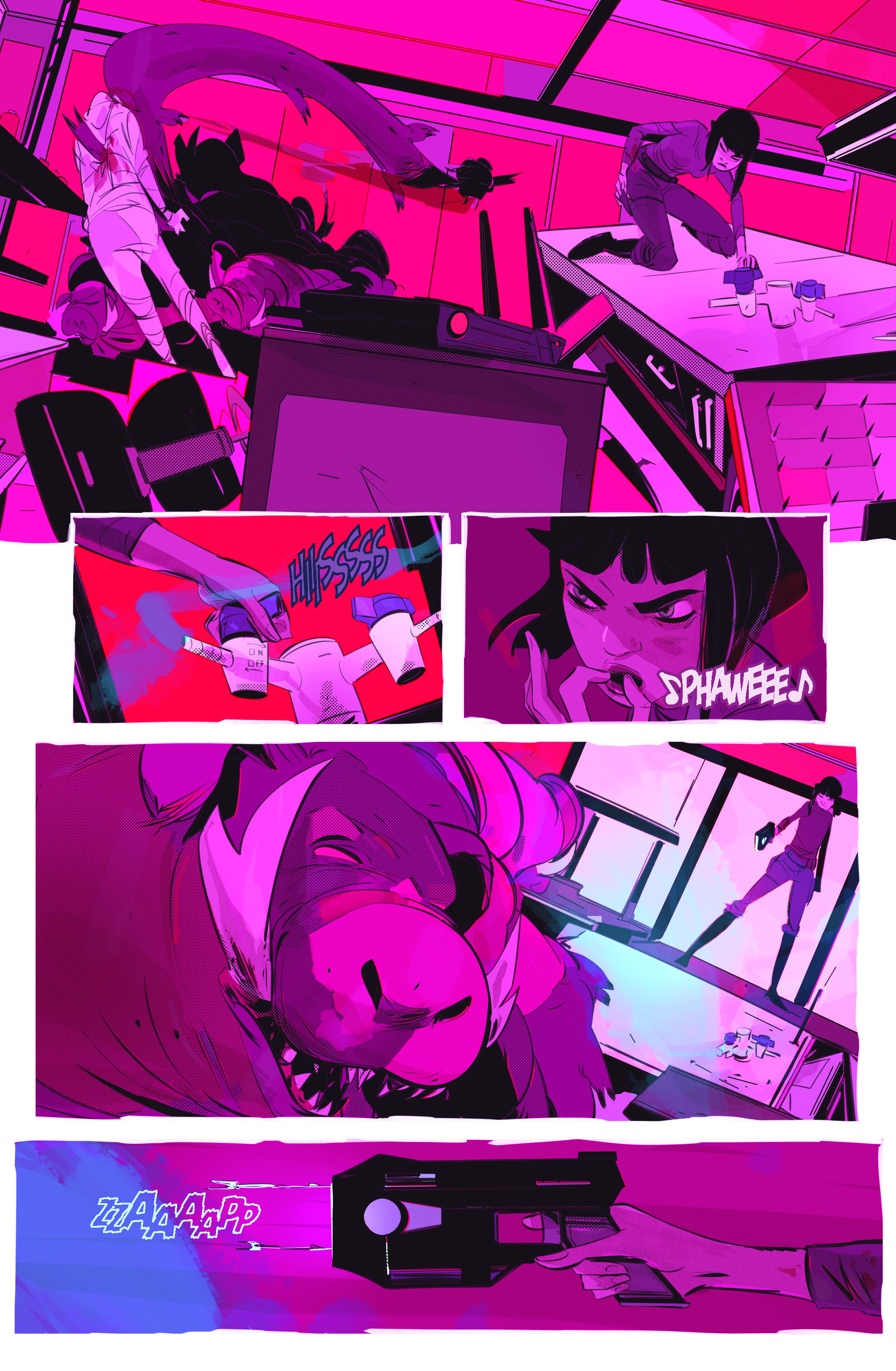
FAB: Pandora. StoryWorlds Media. 2021.
The world-building in FAB is superb: we are introduced to all of our main characters and the stakes of the world right away. Ramzee places the explanation of what the fabs are, what they do, and their mysterious origin only a few pages in. This is an excellent writing choice since it introduces the central object of the comic clearly and effectively. The world-building is aided by having Marcia waking up in the hospital and needing the explanation of her death and the new world she’s a part of. The reader learns just as much about the world as Marcia does; we are both initiates, uncovering the extent of Troy’s corruption and lack of morality.
This also adds a layer of suspense to the story that works, keeping audiences on their toes and constantly changing the stakes as more information is gradually uncovered. The only place where there are problems in the narrative is towards the end, once it is uncovered that the Marcia we have been following the entire time is merely a fab. The real Marcia Clay is what fab!Marcia thought was a fab. The “real” Marcia Clay has been working for The Company for six months and fab!Marcia was a sleeper agent. This section of the comic is confusing upon a first read because of the timeline jumps and the clones, yet the question of the “real” Marcia is resolved rather quickly. It’s a minor blip in an otherwise great comic book.
Pandora’s Box
FAB places itself squarely in the science fiction genre and isn’t afraid to use the tropes associated with it. From evil tech CEOs to clone identity confusion to stun guns that look like rockets, Ramzee’s comic embraces all the classic tropes with bravado. The subtitle for FAB, “Pandora,” encapsulates both the book itself and the events of the plot. Readers are greeted with critiques of technology companies and the products they make; it is not simply a mindless read. It is a serious look at the ways in the amoral, unethical ways technology can be used without regulations or forethought.
Throughout the comic is anxiety about the pervasive nature of big tech and Silicon Valley, unregulated advanced technology, and cloning. It offers a critique of the big tech companies of our world — there is even a page where Troy holds a three-headed dog with the heads of Jeff Bezos, Mark Zuckerberg, and Elon Musk — in an accessible, visually stunning way. I am reminded of the quote from Vice (2018) where the narrator says that the last thing folks want to do is think hard about politics or real-world issues; FAB, and hopefully the future books in the series, offer these ethical and moral questions and concerns in an accessible way for readers through the comic book setting and sci-fi genre.
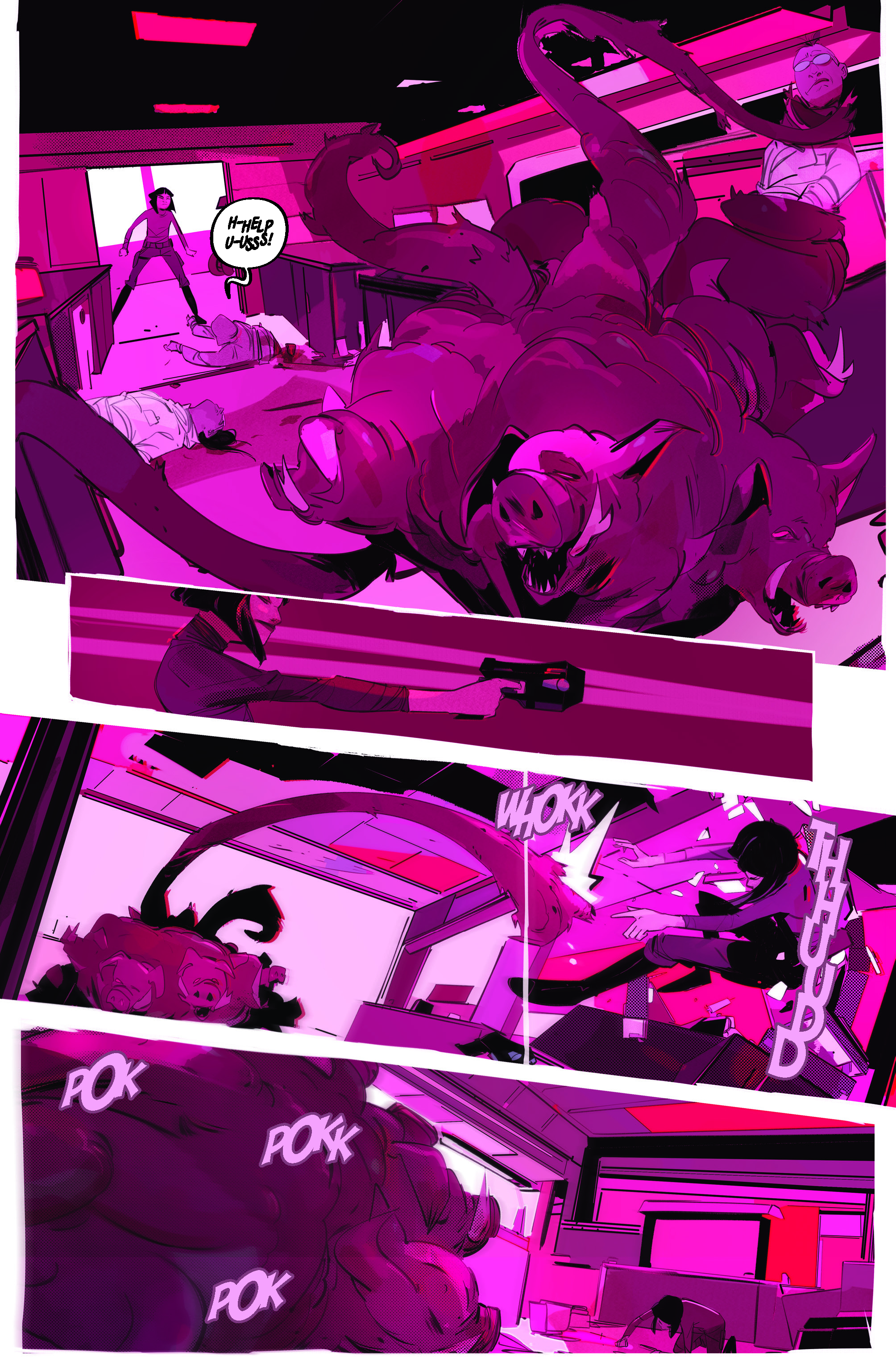
FAB: Pandora. StoryWorlds Media. 2021. 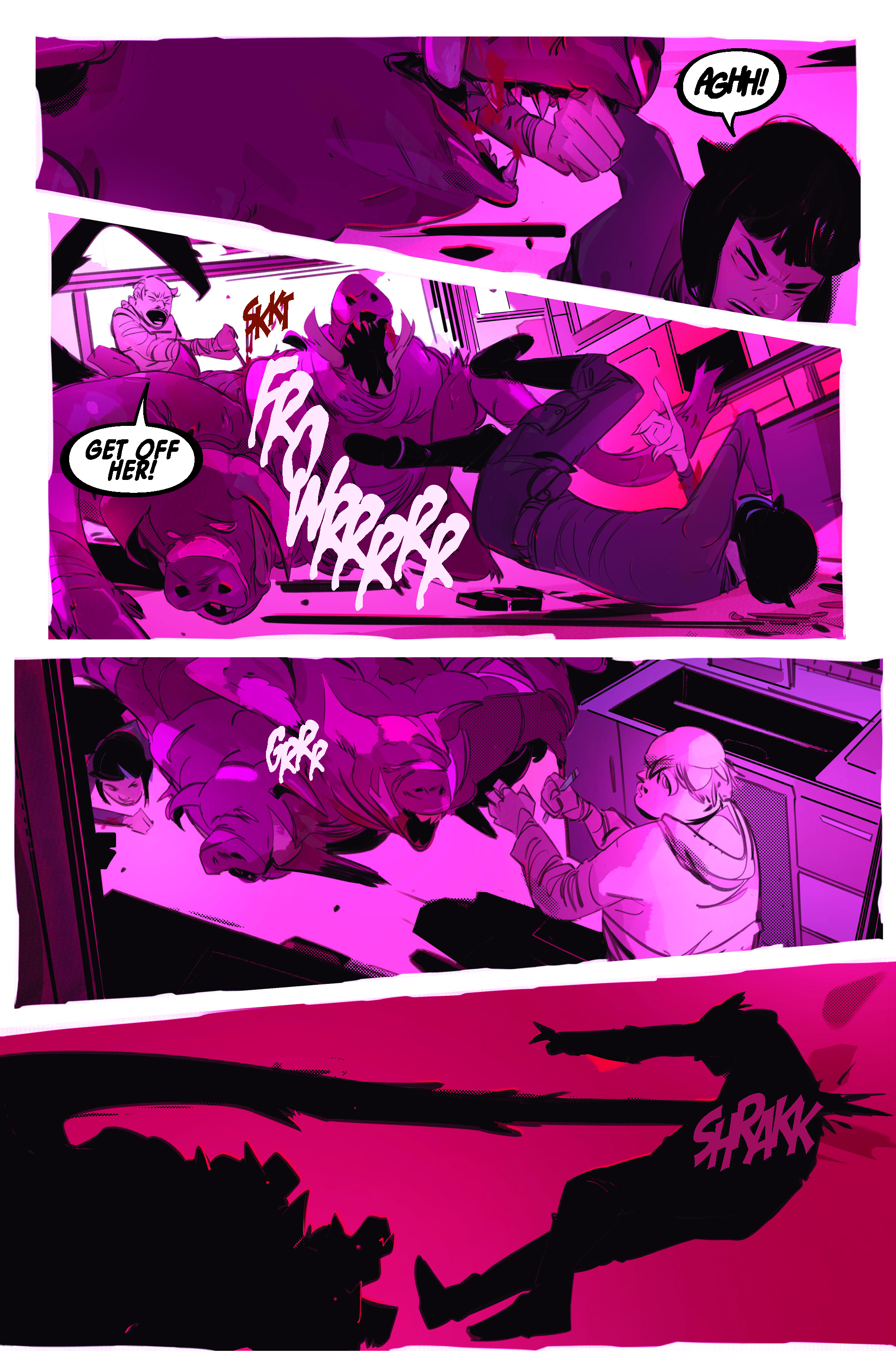
FAB: Pandora. StoryWorlds Media. 2021. 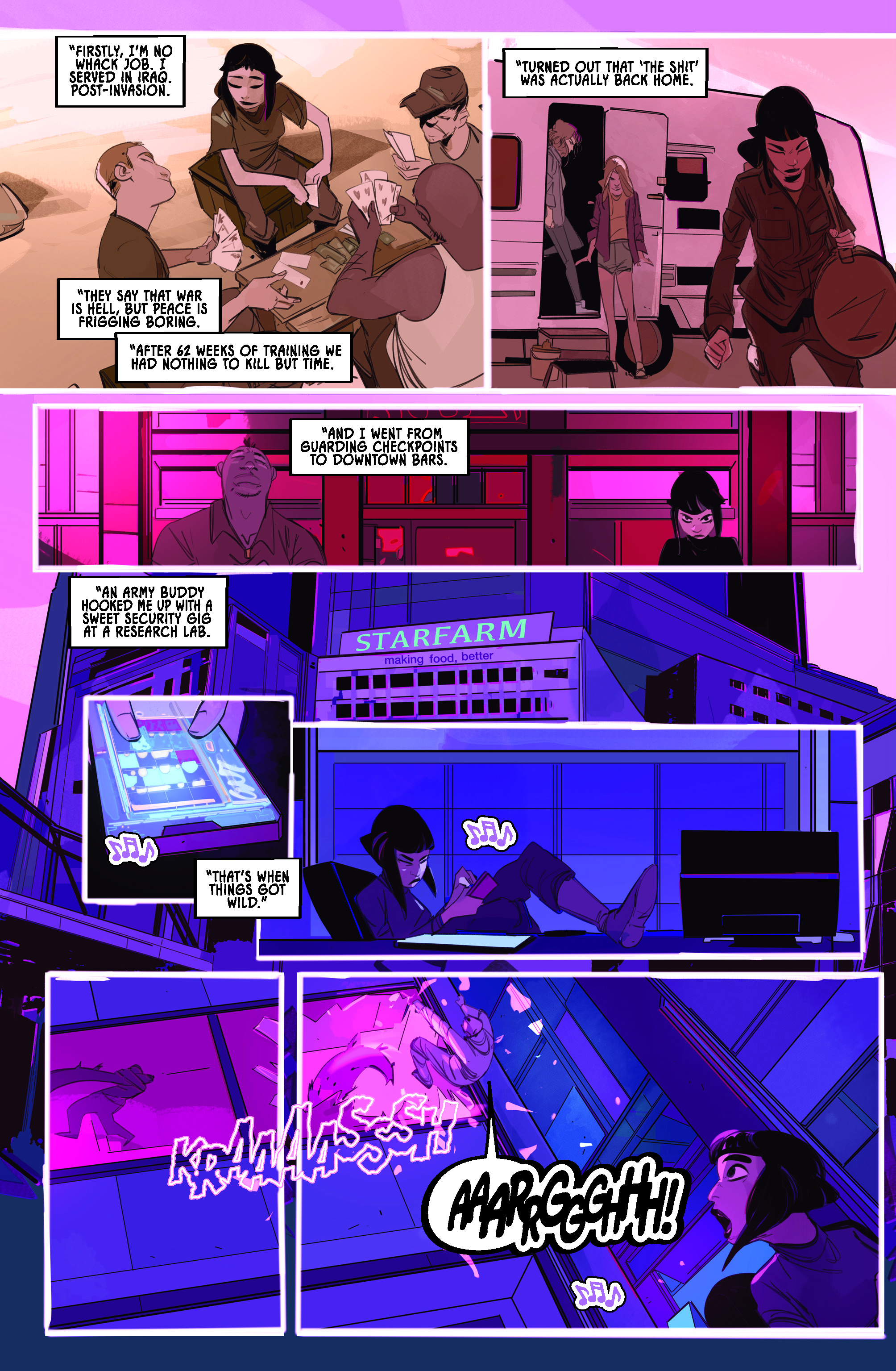
FAB: Pandora. StoryWorlds Media. 2021.
Similarly, when Troy introducing the fab machine to the public, he opens up a metaphorical Pandora’s box of ethical and moral issues that will likely be explored in future books. The comic’s final panel is a protest and counter-protest between pro-fabbers and anti-fabbers, with the reminder that the new changes Troy Tech have made to the world are “exhilarating” and “catastrophic” both. Single-handedly, Troy has changed the stakes and opened up the best and worst parts of humanity by making the fab machines accessible to the public.
Building A Style
Stefano Simeone’s coloring and design of FAB works well to match the emotional undertones of the writing. The comic is colored in bold reds and purples, with blues and greens in more serious or somber moments. The reds and purples in intense scenes help magnify the tension and horror of the panels; the panels of Marcia dying at the research lab and in Mig’s Pentagon flashback are heightened by the bright, eye-popping reds. When Troy is interrogating Marcia, the color palette of the panels is blue, emphasizing how devoid of life Marcia is in that moment. The character design of Marcia, too, is bold and angular; it matches her witty, hardened persona as she navigates her new world.
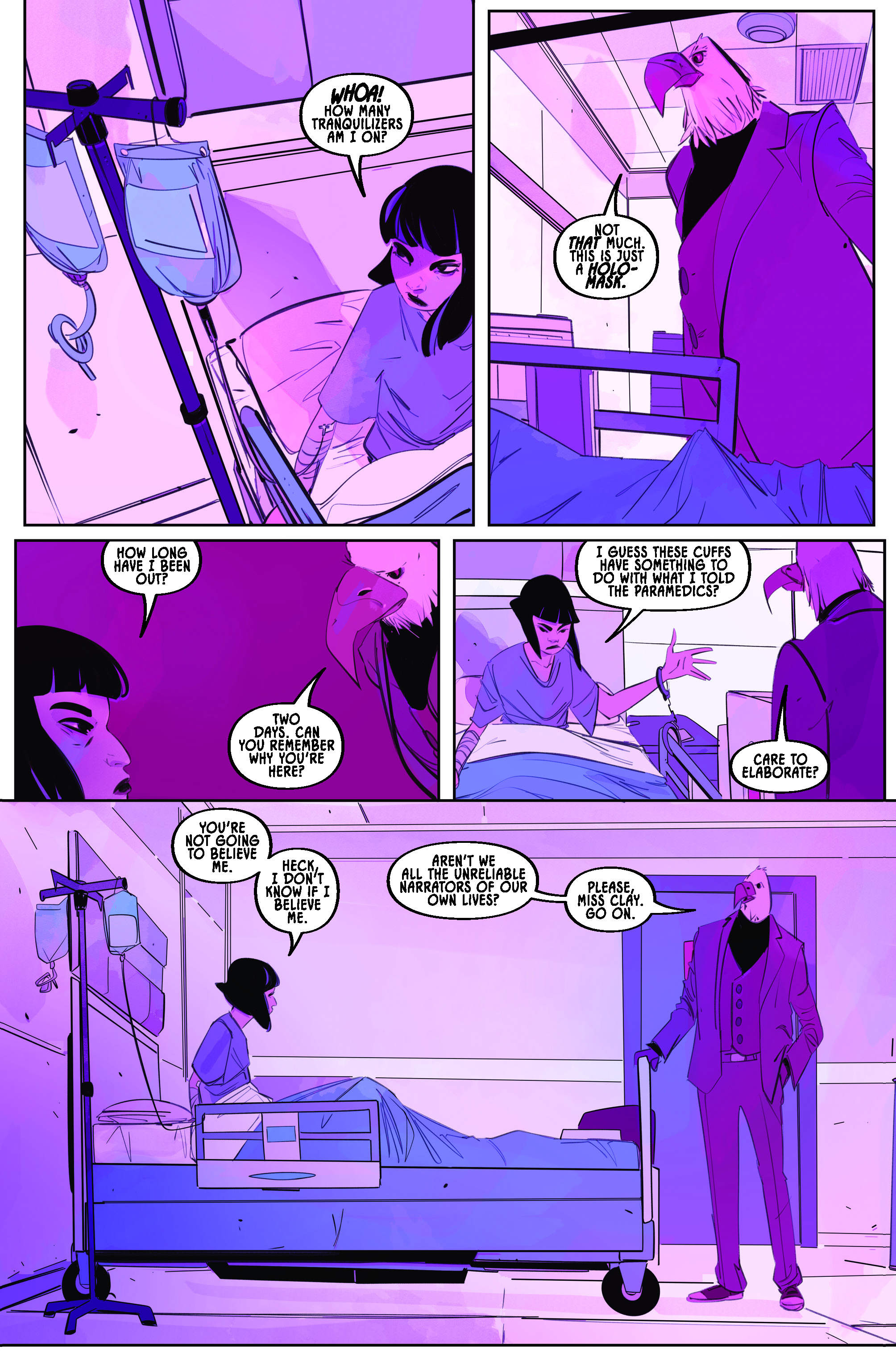
FAB: Pandora. StoryWorlds Media. 2021. 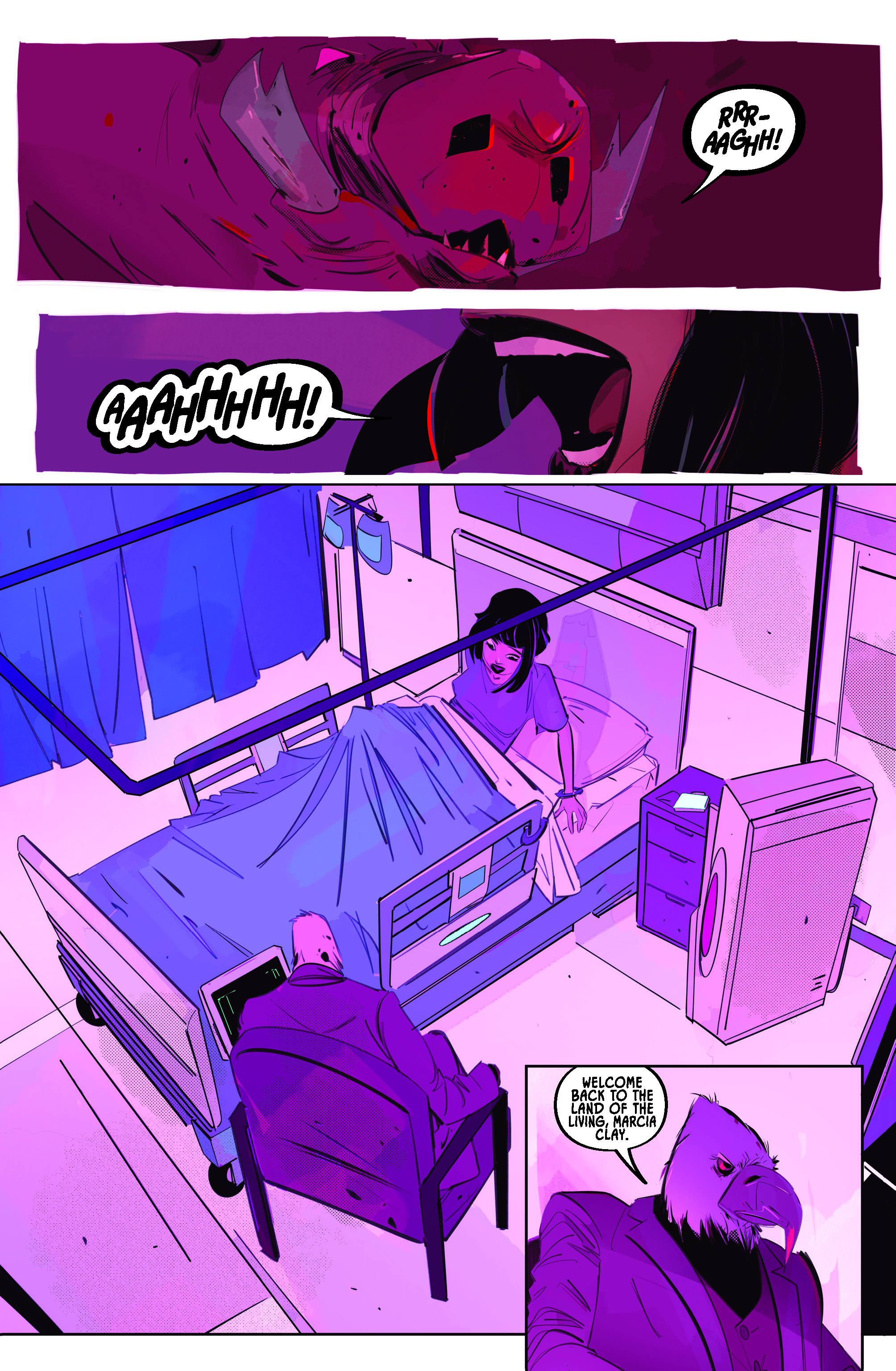
FAB: Pandora. StoryWorlds Media. 2021.
Her bob haircut is blunt all the way across with bangs — much like the MCU’s Hope Van Dyne and TRON’s Qorra — and further emphasizes her usually-scowling face and no-nonsense attitude. And in a comic where cloning is central to the plot, Simeone succeeds at keeping these key features uniform and recognizable. Taylor Esposito’s lettering, too, deserves its due praise. When it’s revealed that a certain character is actually a projection of an AI system, the text in their speech bubbles is given a digital look that emphasizes its origins. It’s a simple change that adds more intensity to the reveal of said character’s true nature and strips away any humanity they may have appeared to possess. It reminds audiences that they are not a human but an evil technological entity.
A FAB-ulous Job
The pace of FAB is breakneck, thrusting us immediately into the action and surprising readers with new technologies or revelations throughout the story. The bold and ambitious story from Ramzee is matched by Simeone’s bold coloring and striking character design and Esposito’s artful lettering. FAB opens readers up, Pandora’s Box-like, to a world that could resemble ours if we don’t consider the morals of big tech companies and the ethics of advanced technology.
